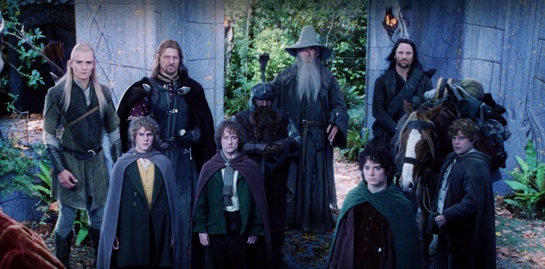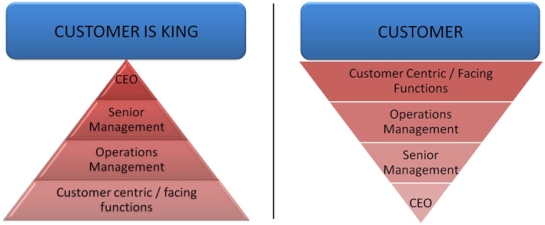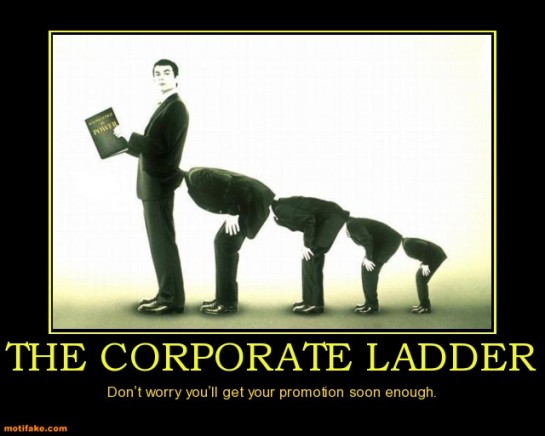Fellowship
We live – and work – in a world in which most folks have yet to understand the practical dysfunctions of having managers (and the inevitable accompanying hierarchies, power structures, etc.). So talking about leadership, its different forms and its distinctions from management, can seem like an irrelevance to many.
Going beyond the issue of leadership – into other forms of organisational guidance, coordination, inspiration and direction – might therefore seem even more irrelevant.
Nevertheless, and leading on from my recent ACE conference keynote, I have come to believe that leadership is in essence an idea mired in the Analytic mindset. No less dysfunctional, and more pernicious even, than the idea of hierarchical management. I invite you to consider that there may be more effective forms of organisational guidance, inspiration and direction, in particular the one I explore here: Fellowship.
Idealised Design
“Idealised design made me realize that if you never take the time to imagine what you really should be doing, as an individual or organization, you’ll never get there. It also brought home to me just how difficult a process redesign is, because we are so wedded to assumptions we don’t notice, historic business models and other, often dysfunctional baggage we take for granted.”
~ Jerry Michalski via the Ackoff Weblog
Idealised Design is an idea from Russell L Ackoff. Put simply, it asks the question: “If an organisation and all its assumptions, history and associated intellectual baggage were destroyed overnight, how might we reconceive and reconstruct an entirely new version of that organisation?”
In the context of organisational guidance, inspiration and direction, what kind of approach might prove most effective, if we could only let go of our existing preconceptions and assumptions, admit recent research from e.g. neuroscience and sociology, and create an idealised design for a better solution than “Leadership”?
Leadership
Influence, induce, guide. All terms implying coercion, or at least a negative impact on folks’ autonomy and intrinsic motivation. Our collective view of leadership, shaped as it is by millennia of history, rarely receives much critical examination. “Heroic Leadership” in the person of such “great” historical figures such as Napoleon, Alexander, Martin Luther-King and even Gandhi beguiles and seduces us, blinding us to the deleterious aspects of such a model.
Of course, in principle there’s nothing to stop anyone across the organisation from assuming positions of de-facto leadership. But in most organisations this is rarely seen, not least due to its career-limiting implications.
Gallup has recently published research showing the scale (and cost) of workplace alienation:
“Our estimates suggest that there are more than 22 million workers – in the United States alone – who are [alienated]. This rampant negativity is not only disheartening, it’s expensive: It costs the U.S. economy between $250 and $300 billion every year just in lost productivity. When you add workplace injury, illness, turnover, absences, and fraud, the cost could surpass $1 trillion per year.”
~ Gallup
And the impact is not limited to commercial considerations:
“One study of (healthcare) workers found that when employees were working for a boss they disliked, they had significantly higher blood pressure. According to British scientist George Fieldman, this boss-induced hypertension could increase the risk of coronary heart disease by one-sixth and the risk of stroke by one-third.”
~ Gallup
I posit that, even ‘good’ leadership risks perpetuating or even exacerbating workplace alienation and stress. There are other models of Leadership distinct from that of “Heroic Leadership”, (see: servant leadership and host leadership, below) but I suggest these are essentaily just attempts to “do the wrong thing righter”.
Servant Leadership
I find much to like in Robert Greenleaf’s revision of Leadership, as described in his book “The Power of Servant Leadership“. This is a radical revision of the notion of Leadership, in that it proposes the inversion of the classic management hierarchy pyramid such that the front-line workers, those closest to the customer, are at the top of the organisational pyramid, with middle managers below them, supporting them in their decisions, and with senior management at the very base of the pyramid (see rightmost diagram, below).
Host Leadership
Host Leadership, as proposed by Mark McKergow, takes the idea of Servant Leadership in a new direction, relying on folks’ natural understanding of the “party host” and the traditions of hospitality seen across many human cultures throughout history.
Fellowship
“There will never be real equality so long as one feels inferior or superior to the other. There is no room for patronage among equals.”
~ Mohandas K Gandhi
Is equality simply a moral issue, a nice-to-have, or are there good reasons for believing that equality contributes to the highly-effective organisation? I believe the latter. If you concur, then might we together consider ways to bring about “real equality”?
I propose the idea of “Fellowship”. Most everyone has read the book or seen the film “Lord of the Rings”. In this story, the Fellowship of the Ring consists of nine representative of the “free peoples of Middle Earth”. All nine are “bound together by a common doom”, i.e. a shared purpose. The Fellowship has no leader; each member leads (or follows) as circumstances dictate. Even though differing greatly in size, knowledge, power, capability and insight, every member of the Fellowship is essentially “equal” – in the way I believe Gandhi meant.
I think such a kind of “Fellowship” offers us a great exemplar of a different and effective way of achieving guidance, inspiration and direction in the highly-effective organisation.
I suggest Fellowship consists of the following aspects:
- Friendliness
- Community
- Harmony
- Comradeship
- Society
- Mutual trust
“If you could get all the people in an organisation rowing in the same direction, you could dominate any industry, in any market, against any competition, at any time.”
~ Patrick Lencioni
The question for me is: why do we still believe that Leadership (in any form) is the most effective way to make this happen?
– Bob
Further Reading
You are the Messiah and I should know: Why Leadership is a Myth ~ Justin Lewis-Anthony









